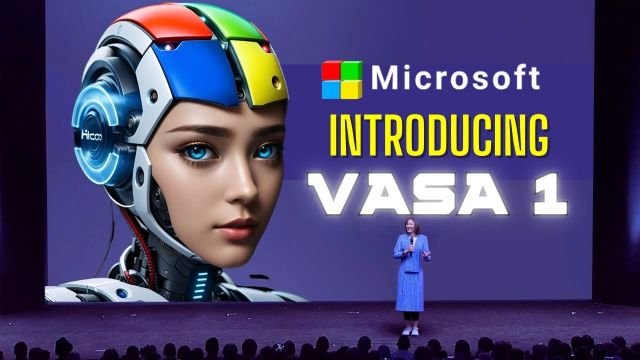Imagine this: you have a cherished photo of your grandparent from their younger days. With a new AI model from Microsoft, VASA-1, you could bring that picture to life!
VASA-1 stands for Visual Affective Skill, and let me tell you, it’s a real game-changer. This AI system takes a single image of a person and an audio clip, then generates a short, hyper-realistic video of that person speaking the audio.
Think about it – you could use a photo of yourself and have it narrate a funny story in your voice, or bring a historical figure to life by feeding VASA-1 a painting and a speech they might have given. The possibilities are pretty mind-blowing!
Here’s how it works: VASA-1 is trained on a massive dataset of faces and videos. It analyzes the audio track, picking up on changes in pitch and tone. Then, it uses this information to manipulate the facial expressions in the image to match the audio. It doesn’t just stop at lip syncing, though. VASA-1 can also generate subtle movements like head tilts and eye blinks, making the final video scarily realistic.
Now, you might be thinking, “Isn’t this just like a deepfake?” Well, there are similarities. Deepfakes are often used to create fake videos of people saying things they never did. VASA-1, however, is intended for more positive applications.
For example, imagine someone who has lost their voice due to illness. VASA-1 could allow them to communicate using a photo and synthesized speech, adding a whole new level of expression to their voice.
The applications aren’t limited to just communication, either. VASA-1 could revolutionize the gaming industry by creating lifelike characters that react and respond to the player’s voice. Imagine video calls where your avatar perfectly mirrors your facial expressions during a conversation!
Of course, with any powerful technology, there are potential downsides. Malicious use of VASA-1 to create deepfakes could become even more sophisticated. This is why it’s important to be aware of this technology and use it responsibly.
Overall, Microsoft’s VASA-1 is a fascinating glimpse into the future of AI. It opens doors for more engaging communication, creative expression, and even historical re-enactments. As with any new tool, it’s up to us to ensure it’s used for good. So, the next time you look at a photo, imagine the possibilities VASA-1 unlocks!
Here are few frequently asked questions on Vasa-1:
What is Vasa-1 Microsoft?
Vasa-1, developed by Microsoft Research, is an AI model that can create incredibly realistic talking faces from just a single image and a voice clip. Unlike older deepfakes, Vasa-1 can generate facial expressions and movements that look natural, including subtle details like eye movements, head nods, and even changes in expression. It can also do this in real-time, making the generated video very smooth.
Can I use Vasa-1?
There is no public information available yet on whether Vasa-1 is accessible for general use. Microsoft Research publications describe it as being in the research phase, and focus on the potential applications of the technology, like creating more engaging video calls or virtual characters.




Leave a Reply